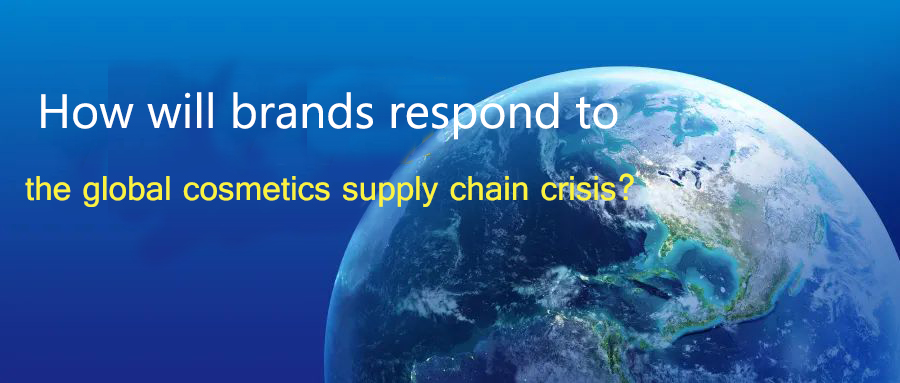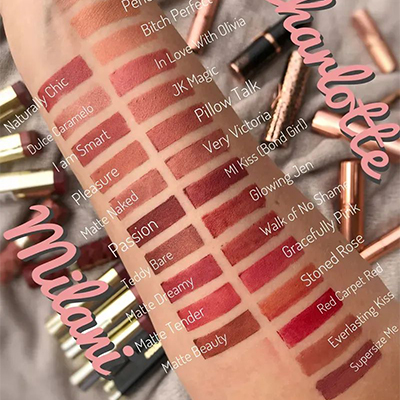How Will Brands Respond To The Global Cosmetics Supply Chain Crisis?
“Mass retailers and brands alike are hopeful that supply chain issues caused by the pandemic won’t disrupt our recovering beauty sales – although higher prices combined with the looming economic crisis may prompt more consumers to cut back on mass brands.” Musab Balbale, senior vice president and chief commercial officer at CVS Health, speaking at the National Association of Pharmacy Chains (NACDS) annual meeting, which opened April 23 in Palm Beach, Florida.
Founded in 1933, NACDS is an organization representing the mainstay of the U.S. pharmacy industry, the pharmacy chain. Since the 1980s, American chain pharmacies have tried to develop in the direction of health, beauty and home care. Their core products fall into three broad categories: prescription, over-the-counter, beauty and personal care products, and also cosmetics.
It is reported that this meeting will be the first annual meeting of NACDS since 2019, and executives from L’Oreal, Procter & Gamble, Unilever, Coty, CVS, Walmart, Rite Aid, Walgreens, Shoppers Drug Mart, etc. Attend.
As Balbale said, supply chain issues will be one of the hottest topics discussed at this conference, which will also discuss the ongoing impact on the industry and solutions to issues plaguing businesses such as inflation, recession and geopolitical turmoil.
Global Cosmetics in a Supply Chain Crisis
“Supply tightness and shipping delays are expected to ease. But with the Russian-Ukrainian crisis, rising oil prices and still labor and throughput issues at Chinese and U.S. ports – a combination of factors will present the risk of future supply chain disruptions – this risk may It will last into the second half of this year,” said Stephanie Wissink, senior analyst at Jefferie, a multinational investment bank.
The industrial chain layout planning of “eggs are not in one basket” is not only valued by Coty Group. As a beauty product supplier, Mesa Chief Growth Officer Scott Kestenbaum (Scott Kestenbaum), who works with Sephora, Walmart, Target and other retailers, also said that Mesa has been working hard to make it Factories were moved as far inland as possible and dispersed to different cities.
In addition to the scattered layout of factories, solutions to “increase production capacity” and “stock up” are also favored by other companies.
Affordable cosmetics usher in a period of opportunity
“There’s no doubt that rising costs of beauty ingredients and inflation will tighten consumers’ belts—but interestingly, now may also be the biggest opportunity for affordable beauty brands.” Contributor Faye Brookman, WWD Personality wrote in the column.
“The past two years have been our best two years in a row. We’ve met a lot of new customers who’ve been with us all the time,” said Mark Griffin, president and CEO of Lewis Family Drug. “A lot of people are choosing to buy the affordable price they need. Brands, instead of driving to name-brand stores, we have to have them on our side.”
According to WWD, several beauty bloggers on TikTok recently released Milani’s Color Fetish Matte lipstick as an alternative to Charlotte Tilbury. The action was met with enthusiasm, with Milani’s lipsticks selling out quickly at Ulta and Walgreens’ sales up 300% in two weeks.
In the four weeks ending March 12, 2022, dollar sales of affordable beauty products grew 8.1% year over year, according to Nielsen IQ. In its report, WWD argues that rising costs of beauty products could benefit affordable brands: “In these brands, the increase in raw materials and costs typically manifests itself in the price of a lip balm at $7, which is now $8; the original price of $30, $40 right now — the former is naturally more acceptable by comparison.”
Currently, retailers are also adding such “half-price” products, which are neither too expensive nor inferior. In the second half of 2022, Walgreens will add products like Hey Humans and Makeup Revolution that are affordable and effective, said Lauren Brindley, vice president of personal care and beauty at Walgreens. The product is famous. “I hope our customers don’t have to sacrifice the quality of their beauty regimens because of price increases,” she said. “Affordability and quality are not mutually exclusive.”
As a supplier, Kestenbaum also said the current market is a “perfect storm” for affordable beauty brands. “Affordable brands are in a unique position during a recession,” he said, “because they benefit both from increased foot traffic at food, drug and big box retailers, as well as from ‘downgrade’ shoppers who are starting to seek lower prices. A deal. They.”
Post time: May-10-2022



